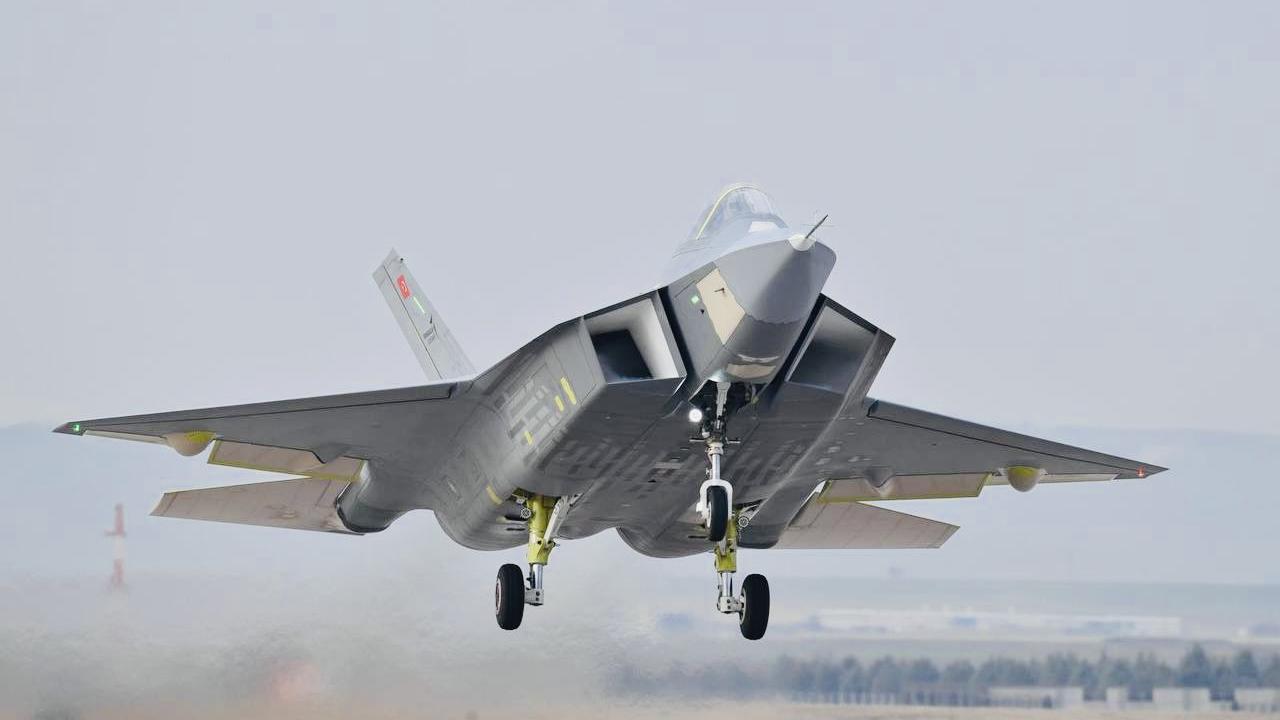It's meaningless now. They included Sweden, Iran and Pakistan.The list seems to include our country, at least for now.
Must stay vigilant.
Iranians have a fifth gen fighter now, thanks to us.
Latest Thread
It's meaningless now. They included Sweden, Iran and Pakistan.The list seems to include our country, at least for now.
Must stay vigilant.
It is clear that there are some developments in the background, but there is no clear information in open sources yet. TRMOTOR's post after maiden flight:
This claims that the domestic engine will power the deliveries of 2028(?)
Kotil: We built the Hürjet to accelerate the Kaan project. We are working on the 6th generation through KAAN."If we want, we can do anything. God willing."
Landing gears were open all the time. Does that not change RCS?Holy moly, I didn't notice. So, they were confident there were no spying chance nearby.
Zekatımız olsun be!Iranians have a fifth gen fighter now, thanks to us.
Kotil: We built the Hürjet to accelerate the Kaan project. We are working on the 6th generation through KAAN.
Perhaps one of the most important evaluation mistakes we have made is that we are referring to the traditional project development models of the western aviation industry. Normally, there should be 10-15 year intervals between these systems, but at TAI, the development of successors and predecessors are built on top of each other simultaneously.
You’re saying we’re doing quantum leaps to achieve the extraordinary.Kotil: We built the Hürjet to accelerate the Kaan project. We are working on the 6th generation through KAAN.
Perhaps one of the most important evaluation mistakes we have made is that we are referring to the traditional project development models of the western aviation industry. Normally, there should be 10-15 year intervals between these systems, but at TAI, the development of successors and predecessors are built on top of each other simultaneously.
So much so that even before Kotil gave an interviewEdit: you beat me to it
(...) In addition, I consider TAI officials statements that 'we have started 6th generation studies' as an extension of the KAAN program, in other words, I predict that a smooth transition to the next-nextgen jet is planned. I mean, almost every technology will be applicable in KAAN first until the need to change the airframe.
(...)From the very early stages of KAAN's production, the process will be, in a sense, an adaptation of advanced variants to the operational qualities of what is now defined as the sixth generation. And these new capability gains will have a direct impact on future platform conceptualizations.
That's a great description, it could be put in wikipedia just like that.I think the idea of 6 gen fits in my head better right now. Essentially its very strong engines for high electricity generation that enables use of lasers as CIWS sort of against enemy missiles that changes the game. 5th gen focused on reducing observability across the EM spectrum to increase survivability to avoid detection and increased sensor and processing capabilities for a leap in situational awareness. 6th gen is the next stage where you have hard kill solution against targets that can target you and come close. Imagine you can just melt enemy AMRAAM, no escape maneuver or chaff and flares. This is 1 of the paragim shifts if it is feasible.
Other is as we know system of systems, manned unmanned cooperation.
in our university we had drone club called suas. in my early years the competitions was about how high or how long or how fast you can fly with your drone. but in my last years competition changed to drone vs drone targeting with laser. ofc the laser wasn't strong to damage the drones but rather used as targeting and hitting mechanism. they said to us that there is no drone in the world that targets other drone that's why we are doing this.I think the idea of 6 gen fits in my head better right now. Essentially its very strong engines for high electricity generation that enables use of lasers as CIWS sort of against enemy missiles that changes the game. 5th gen focused on reducing observability across the EM spectrum to increase survivability to avoid detection and increased sensor and processing capabilities for a leap in situational awareness. 6th gen is the next stage where you have hard kill solution against targets that can target you and come close. Imagine you can just melt enemy AMRAAM, no escape maneuver or chaff and flares. This is 1 of the paragim shifts if it is feasible.
Other is as we know system of systems, manned unmanned cooperation.
Did not surprise me one single bit.I don't think he means this in the sense that the experience gained from Kaan will be used for an all new 6th gen platform. Kaan itself will likely be modified into a 6th gen fighter.
I fine network-data link capability and MUM-T beyond these technical details. If a fighter is capable of retrieving or processing an unmanned fighter's search radar signal then it is safely a 6th gen.That is all rather European definition of 6th gen.
But in my book, If it ain't something like this, then don't call it 6th gen.
View attachment 65891
I fine network-data link capability and MUM-T beyond these technical details. If a fighter is capable of retrieving or processing an unmanned fighter's search radar signal then it is safely a 6th gen.

 www.trthaber.com
www.trthaber.com
Then NGAD will do it more, and better. I don't think it is very challenging for US to make NGAD quickly if it just about the omitting tails (like they have been playing with such aircrafts for decades), it takes more time to develop electronics and software - data links nowadays.F-35 will do that in the next decade with CCA. But then, USAF has NGAD.
I want to set the bar higher and see something close to Sci-Fi.
I remember being told that it was TÜBİTAK BİLGEM that did the software work.Guys, I would like to inquire about the software developed in order to operate KAAN; in particular, the company which developed it, as some state that it is French Dassault while others state that it is Turkish Havelsan and Aslesan
Which is correct?

It's been circumcised! "Sünnet edilimiş"
